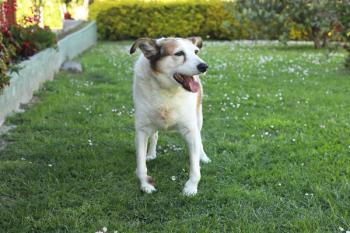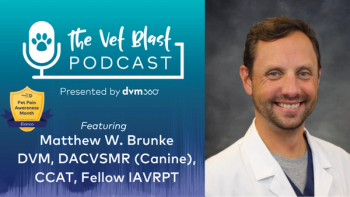
Multimodal osteoarthritis management can relieve pain on the bottom line
Dr. Robin Downing has built a comprehensive osteoarthritis pain management system that uses a combination of modalities.
Pets suffering from canine osteoarthritis were once routinely treated only with a single treatment: nonsteroidal anti-inflammatory drugs (NSAIDs). Today, progressive veterinary practices have begun offering multiple options. One such practice is the Downing Center for Animal Pain Management located in Windsor, Colo., and owned by Dr. Robin Downing. Approximately 20 percent of Dr. Downing's patients suffer from the degenerative joint disease, which reflects national averages.
Quantifying the care
Following a conviction that no animal deserves to hurt, Dr. Downing has built a comprehensive osteoarthritis pain management system that uses a combination of modalities, which not only relieves her patients' pain but also boosts her practice's image and serves as a multilevel source of revenue.
"Multimodal osteoarthritis management means profits from professional services, including the initial diagnosis and regular reassessment appointments, along with sales of pharmaceuticals, prescription nutritional products, and nutritional supplements, plus physiotherapy and other physical medicine options," Dr. Downing says.
DIAGNOSIS AND TREATMENT
Dr. Downing begins with an initial pain examination and consultation. Once she makes a diagnosis, she discusses a multimodal plan with the dog's owners. "It's our experience that once pet owners know that their dogs hurt, they want to do whatever they can to address the problem," Dr. Downing says. "Part of our obligation to the pet and to the client is to find the strategy that will yield the best outcome, yet to be respectful of financial limitations the client may face."
In addition to NSAIDs, Dr. Downing may prescribe other pharmacological agents that complement one another in their actions. Other treatments may include acupuncture, chiropractic adjustment, physiotherapy, myofascial trigger point therapy, nutritional therapy, weight loss, and home environment modification recommendations.
A groundbreaking therapy is adipose-derived regenerative cell therapy, sometimes referred to as stem cell therapy. Dogs are injected with cells retrieved from the fat in their own bodies, which essentially helps rebuild the tissue inside the joint. The therapy helps curb the need for invasive surgery. (For more, see "Help pets get well with their own cells" at
A TEAM EFFORT FOR MAXIMUM EFFECT
Dr. Downing, who's a member of the International Veterinary Academy of Pain Management, says it's important for doctors to stay on top of the latest treatments for osteoarthritis and to keep their teams educated and informed. Dr. Downing's healthcare staff is involved in preparing prescriptions, reviewing dosing instructions with clients, teaching clients how to administer injections at home, following up with clients by phone to monitor patient progress, and delivering physical rehabilitation care. "I also try to have them available during follow-up appointments to help provide consistency of care," Dr. Downing says.
Dr. Downing's multimodal treatment approach has not only helped build her practice, it has lengthened the lives of some dogs and greatly improved their quality of life.
Newsletter
From exam room tips to practice management insights, get trusted veterinary news delivered straight to your inbox—subscribe to dvm360.






